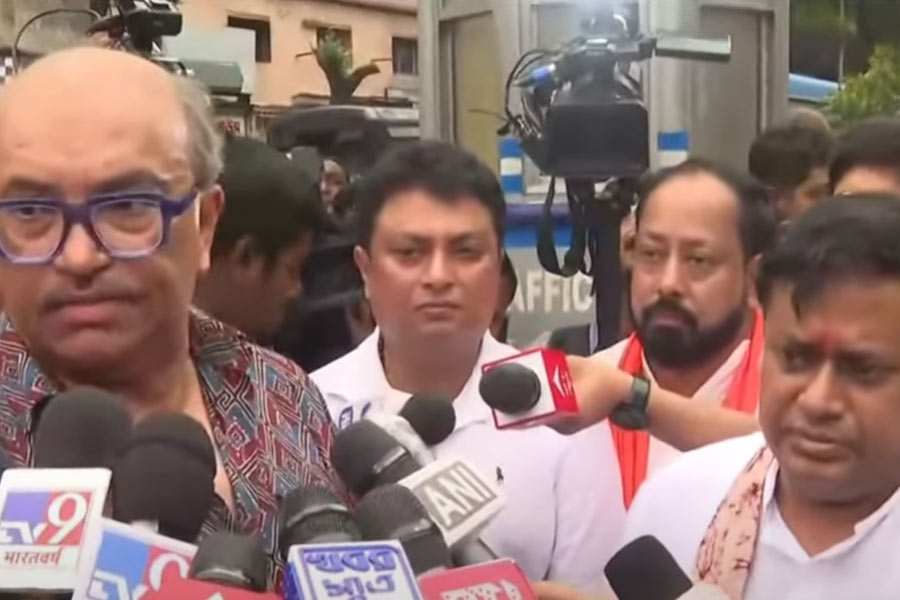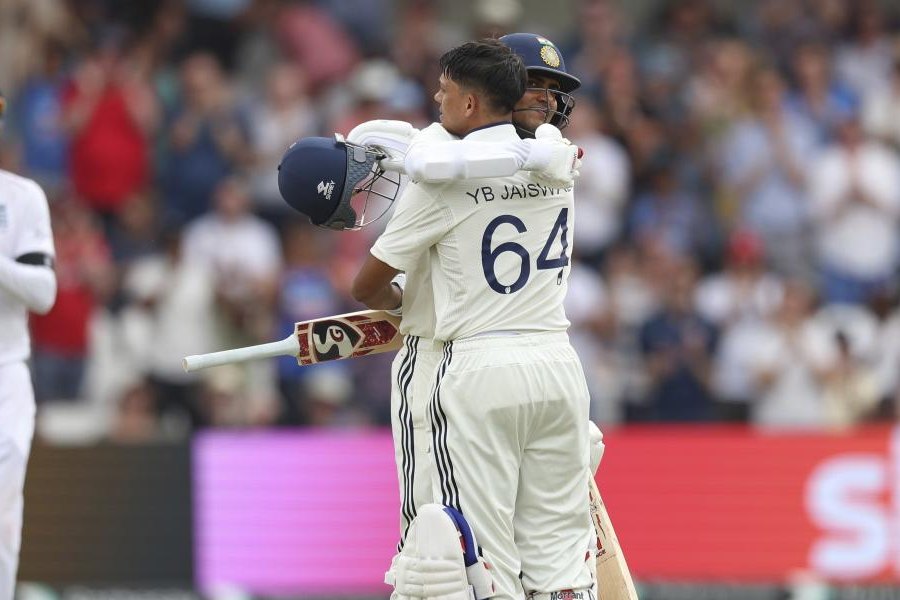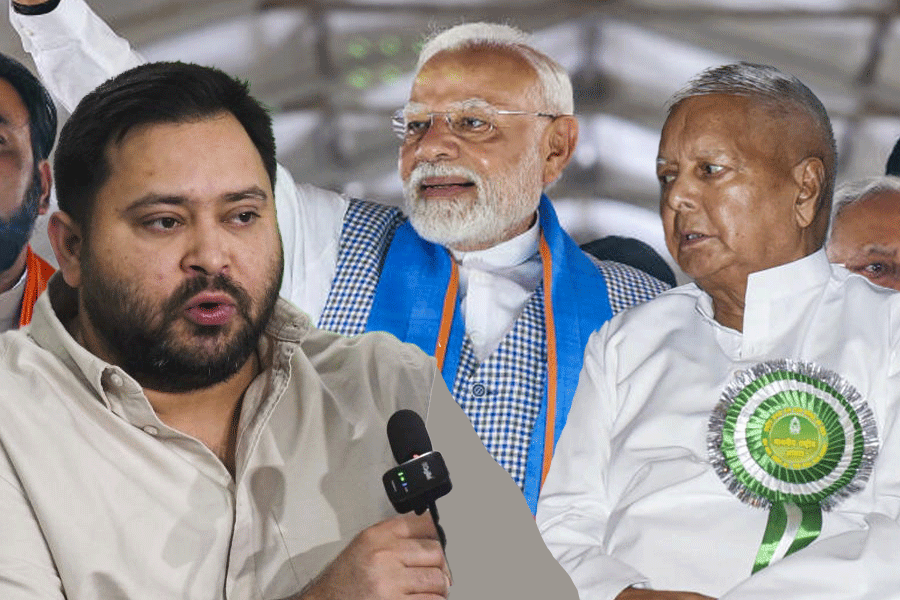Upon entering the premises of the Academy of Fine Arts Festival on the evening of August 22 and making one’s way down the serpentine pathway leading to the auditorium, one paused for a few moments, wondering whether, by design or by magic, the evening of May 1 had returned. The post-colonial proscenium theatre in downtown Calcutta has seen many negotiations between tradition and individual talent, between groups working as an ideological and aesthetic unit and breakaway factions that redefined the artistic mission that the parent group had embarked upon. Pancham Vaidic observed their 35th anniversary with a five-day festival. Their method and manner reminded one of Bohurupee, which completed 70 years on May 1, the venue remaining the same. Sombhu Mitra, Tripti Mitra and Saoli Mitra, representing both the groups, have defined a particular approach to Indian theatre. Their successors have extended that quest for reverence with varying degrees of success. The festival demonstrated how.
With Nathabati Anathabat, Saoli Mitra returned to the centrestage after a prolonged hiatus on August 22. The maiden venture by Pancham Vaidic has travelled a lot and in the process, refashioned some of the crucial issues pertaining to urban theatre practice with the indigenous narrative tradition. Nathabati Anathabat also challenged the dominant reading of the Ramayana myth by interpolating with medieval readings, like the one by Krittivas Ojha and recent critical interpretations.
It would be naïve to describe this master act as a feminist pièce de résistance with Draupadi as the pivot, as Nathabati Anathabat achieved much more. While referring to Iravati Karve, Saoli ‘domesticated’ her as ‘amader Iravati didi’, thereby achieving a female bonding.
Saoli used to perform this 130-minute solo act supported by a chorus of actors and musicians to full measure till a few years back. Nowadays she presents ‘Path-Abhinaya’ instead. She, of course, makes direct communication with the audience, referring to them as ‘Babumoshaira’, in the true kathakata style, rendering them confidantes in the process. On that evening, although heavily depending upon the vachika, and handicapped in the angika, Saoli exploited every opportunity to energize the stage space with gestures and postures as she remained seated on the centrestage with the printed text open before her. While playing Keechaka in his toilet as he prepares himself before approaching Draupadi for carnal favours, Saoli performed wordless wonders like picking up a silver hair and throwing it away in desperation. The comic and the crude found a sublime melting pot.
If Nathabati Anathabat is an experiment in retelling the Aryan epic, Karubasana (August 24) is a portrait of a poet as a young man finding himself at odds with domestic as well as capitalist worlds. Arpita Ghosh, Saoli’s protégé, not only dramatizes this stream of consciousness novel with a distinct autobiographical streak by Jibanananda Das, but also directs it with a subtlety that underlines the pathos evident in the narrative. Karubasana, a 2015 production, develops against the backdrop of the reformist Brahmo Samaj movement in riverine Barisal that the Das family led. For the protagonist, Arpita goes for a double casting, a ploy rarely utilized in Calcutta. Debesh Chattopadhyay’s fluid scenography turned the stage into an immersive space that posed further challenges to the actors. However, Sujan Mukhopadhyay and Anirban Bhattacharya, gifted with different abilities, complemented each other with such precision that the existentialist drama unfolded like the peeling of an onion. Sujan excelled in the poetic essays. Although Anirban held his fort, he looked rather suave for the part. The disquiet, the depression within the household was held together by a strong supportive cast led by Babu Dutta Roy’s saintly act.
Karubasana also celebrated the primacy of the scenographer in the contemporary performing arena, often undercutting the actor and the director who have held their sway for so long. The unstable world of early 20th-century Calcutta, underlined by capitalist principles where an artist craves seclusion and moments of epiphany, demanded a determinably unreal treatment. Things fell at the right places in Karubasana.










